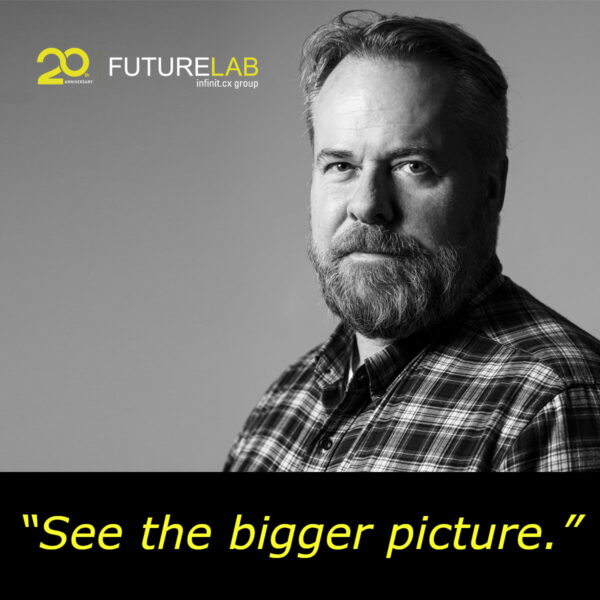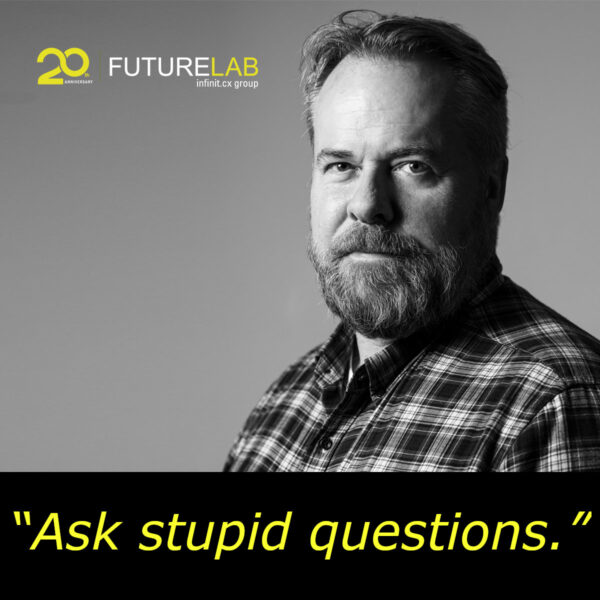“There is a design revolution, but nobody really knows what it is” ~ Karim Rashid
I was reminded of this quote, that Karim commented at the International Design Forum in Singapore a few years back, while I was having a interesting debate with long time Design Sojourn reader and fellow design blogger csven. I must admit I had struggled with this article as it’s such a difficult topic to wrap my mind around. Hopefully this “prequel” would clarify a few things for you dear reader, and perhaps for me as well! Or it would just open another can of worms!
In our recent discussion here, especially in the comments sections it suddenly became clear to me about some fundamental differences in our view points on the state of which products are evolving to with the advent of Web 2.0 technologies and the advances of virtual technology and rapid prototyping. There were many things discussed but it all becomes clear when we understand each other’s position in this debate.
I said: “The product’s ability access to Web 2.0 communities, either their own (Xbox Live) or a partner (Nokia + Flickr), will be a vital selling point in time to come.”
to which csven replied: This sounds to me as if you’re still regarding Real products as distinct from the Net. I don’t do that anymore. And because I don’t, I don’t come to the conclusion that such access is “a vital selling point”. That, to me, is like saying tires on a car is a selling point. My point being that integration will be ubiquitous; everyone will have it and it will be expected. For companies, I think the question isn’t whether or not the product connects, it’s determining what the conversation is *after* it connects.
I think really at this point in time there is no right or wrong answer, but his view and mine are potentially valid future outcomes. However though in the short term, until we figure it all out, it will boil down to the haves and have not. Products with Web 2.0 access will just be more multi-dimensional that the competition.
Yes I agree the ultimate integration of product + web will become ubiquitous. But this “conversation” after it connects sounds to me like a discussion moving towards ubiquitous computing which is a whole different ball game. Ubiquitous computing is something everyone has been talking about for a very long time but to me this will never become a reality until you can jack your mind into the web. Why? It’s about understanding tangibility.
Now let me further elaborate why I think products will still have a place in this web convergent environment, and focusing too much on the virtual web is coming from the wrong direction. Warning this discussion may go into more issues that just product + web, or companies leveraging off Web 2.0 communities.
Tangibility
The biggest trouble I have with the web is about the issue of tangibility. I started this post with a quote by Karim, and what he is leading up to is really all about how products now need to compete with intangible experiences. He elaborated that the best selling products in recent years we DVDs, Computer Games and Software. They are by nature intangible products.
If I can expand on this thus products, to compete, need to provide good if not better experiences to such intangible products. Or in other words better experiences to a sense of ownership, a sense of freedom, a sense of dialog, and a sense of belonging that current Web 2.0 technologies provide.
Basically in a nut shell designers are starting to realize that design cannot compete just by styling, it’s now again about pure innovation, design for emotion, the product’s use experiences and managing the consumer journey. Looks like to me the tried and proven product development techniques or strategies coming back to haunt us in a cyclical manner. Then again even with the flexibility and organic nature of the Internet this may not even be enough.
You see, no matter how virtual you get, humans are by nature tangible, requiring touch, hold and smell all require real objects. However before you consider recent technologies such as tactile feedback touch screens, to smell replicating devices, let me go out on a limb here by saying people will tire of these simulated virtual replacements.
Why? There continues to be a lot of research on the fact that people crave authentic experiences, as evident in this awesome trend primers Insperiences and Tryvertising. Take a look at them to see what I mean.
Sure a virtual 3D environment with surround sound speakers will give you a certain kick, but nothing is as real as skydiving, paint ball fire fights or just riding a roller coaster. On a smaller level, what about the smell and taste of a good cup of coffee, the feel of an expensive teddy bear, and the warmth of human skin? I doubt, unless we “jack in” like Major Motoko Kusanagi from Ghost in the Shell, tangible products are hear to stay, and a lot of the current hype on the virtual net could come to naught.
Now let’s look at the amazing phenomenon that is Second Life with the following points:
Now, the difference between a television ad for Nissan and a virtual Nissan vehicle is the difference between passive information transfer and active engagement. Which is more compelling: sitting in front of a television watching their ad waiting impatiently for it to end so the show will resume, or racing a Nissan super car in a video game? There’s no question. And that’s why this is the wave of the future and companies are looking for ways to understand it now; especially when more and more people simply TiVo past traditional advertising. Now, to be fair, Second Life doesn’t offer a great experience. Far from it. But it does make an excellent testing ground for companies looking to a future where those experiences will be compelling.
~ reBang
1) Advertising for products in the virtual world, can it really represent the real thing? Honestly I am very doubtful as its virtual representing the real. But I do admit the wonders it can do for un-aided brand recall or top of mind product placement. I think though it should be the other way. I would for example buy a virtual BMW Mini, because after driving it in real life and doing the math, a Second Life version is probably all I can afford. Linking reality to the virtual as a substitute when reality is not possible or convenient.
2) According to John Hurliman, Jeffrey Gomez created a plugin for blender that allows the software program to import and export the files for use in second life.
Why is that? Why, after freedom of expression and the ability of navigating the limitless world of a virtual environment, would people want to bring their products back into reality? I believe it’s because being entirely visual, the stimulus causes the user to be tired. Bringing the product back into the realms of the other 4 senses is just a lot more comforting.
Perceived value
A while back I wrote about “why I hate digital media”, in that post I lamented that one of the problems with the internet and products found on it is quite simply perceived value. Why pay for something online when you can get it for free? That is to me the crux of the problem of Mp3 music or any software distribution or service online.
Sure Apple may hold a large percent of the legal downloads, notice I said legal, but can anyone tell me how much bigger are the other side of this? My guess it’s a “helluva” lot bigger and Apple and all the music shops put together.
Furthermore that’s why many software products distributed online is free or free but limited in someway. Furthermore many web 2.0 businesses often run their technologies in free mode and are loss making (contrary to every business fiber in my body) in a hope that they will eventually be bought out by Google, Yahoo, AOL, MSN etc.
When you have something tangible, something you can touch and feel it suddenly has value. People respect it and will care for it. Digital media is too easily loss to be worth of any value. Have you tried reselling your Mp3s after you bought it from iTunes? Oh my did your hard drive just crash with your 10K songs you bought from iTunes?
Sure you could sell your “farmed” gold from World of Warcraft or some powerful in game item for cold hard cash, but its value is only important to a very select group of people. I also can draw many parallels to the virtual nature of the stock market, and its ups and downs having to do with perceived value. This is also a valuable reason why the English Empire or the Sultan of Brunei is so powerful. Land, property, or oil barrels are all tangible items of value. Even the US dollar has to be backed by gold.
Where does the product come back in?
Even though I digress here and there, I hope you can see the point at this all leads back to understanding basic human nature and how we function. I have to admit I don’t quite like the unnatural direction the web is heading towards.
But what about the relationship in product applications? To me it’s really not a good idea to view tangible products, and its intangible Web 2.0 services or software as one, simply because it glosses over a very important factor. That is the bridge between the two. To me that’s where Industrial Designers can play the biggest role which is to think of creative solutions to link up the two.
I’m also not saying we should view the two as separate. Far from it, I believe that products should be viewed as a window or an interface to access these intangible Web 2.0 services, as the future is the two is walking hand in hand. Connected but yet separate, harnessing intangible experiences with very tangible products. Considering it all as one, puts the tangibility vs. intangibility aspect into a black hole that leaves a lot of question marks, as well as trying to merge something against all known laws of physics.
Leveraging off Web 2.0 communities like say Nike iD + Sneakerplay is really, to me, more about a damn good marketing initiative to sell more shoes by being able to design shoes that people want instead of just guessing. What I was trying to say in my last post is not this but more about how to design meaningful products that will work with the web.
Why do that? I believe it is the new dawning and rebirth of the infamous “Internet Appliance”, which were essentially simple yet focused products that do one or a few things really well. I think the complexity of the product will and should remain within the software interface, and thus logically products will move away from the “paradox of convergence” and become a lot simpler and easier to use.
Original Post: http://www.designsojourn.com/the-future-state-of-a-products-existence




